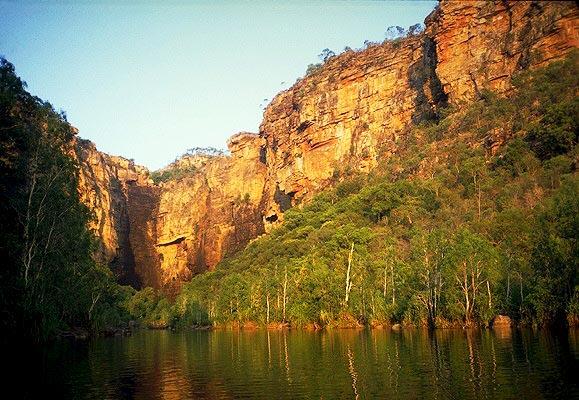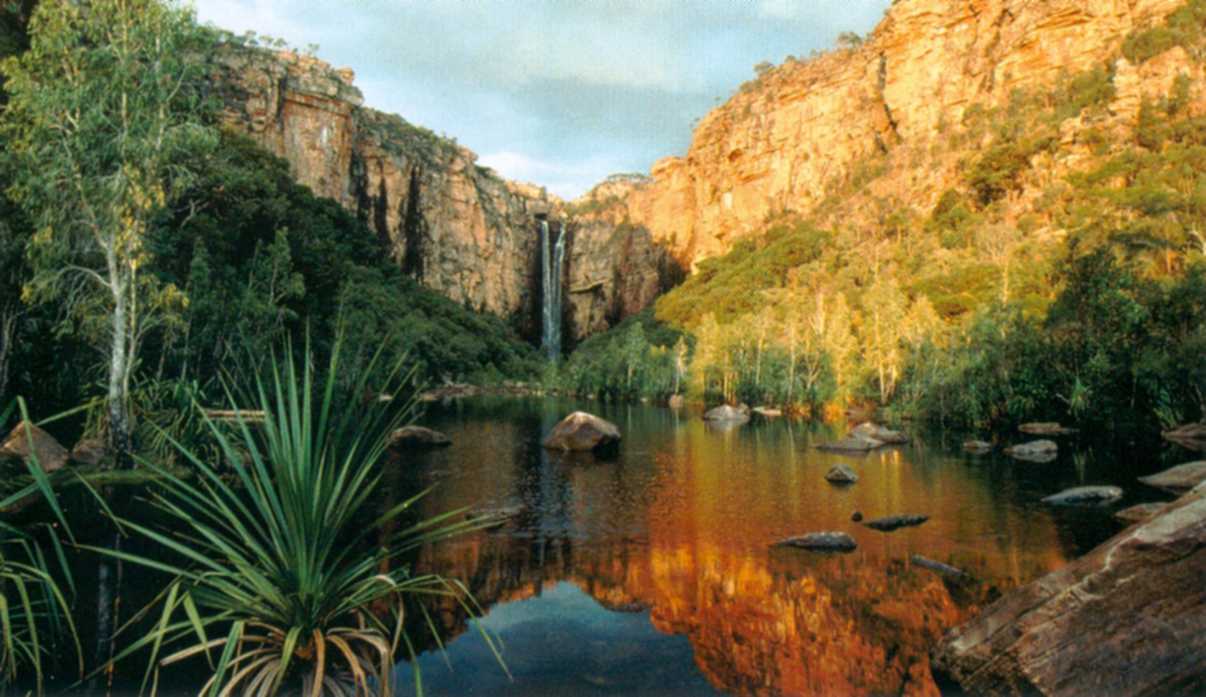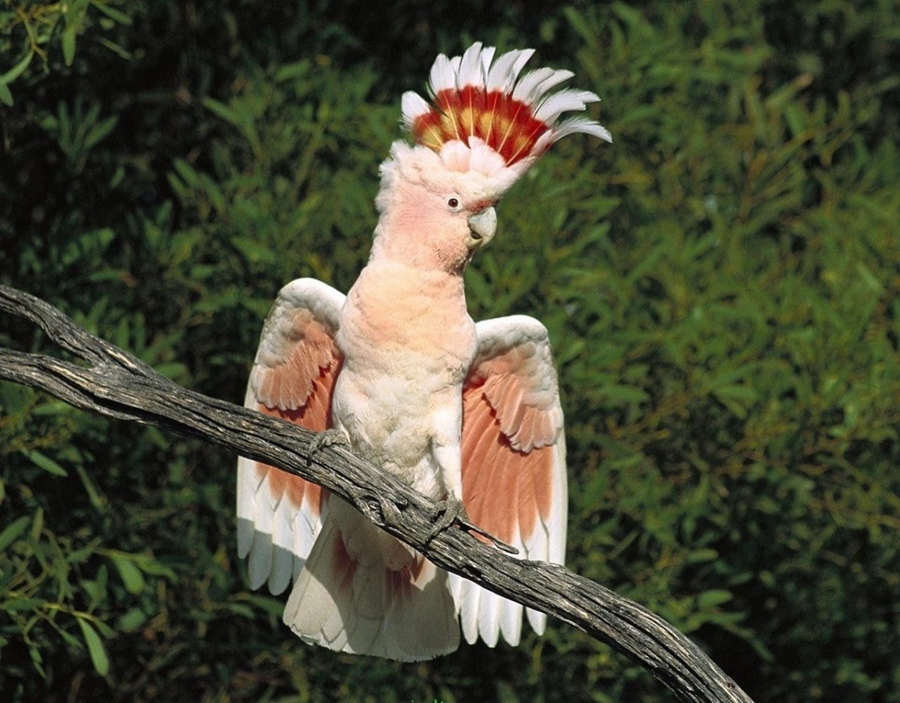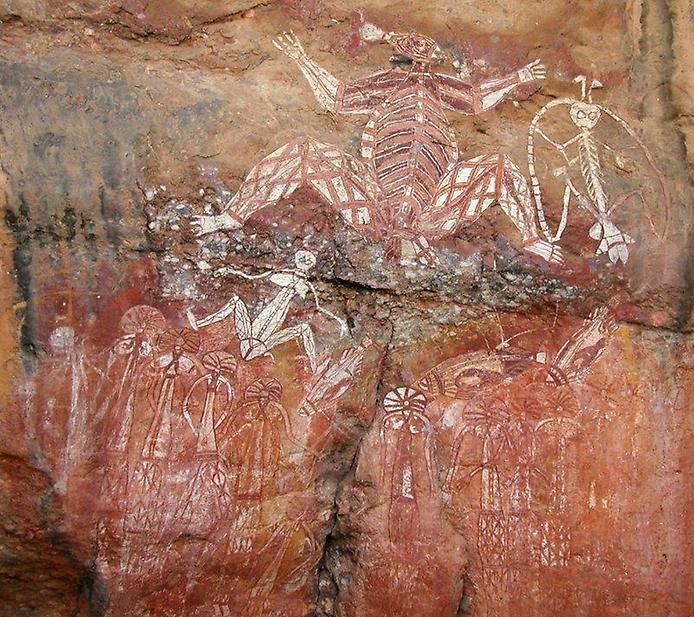Kakadu National Park is a protected area in the Northern Territory of Australia, 171 km southeast of Darwin.
The park is located within the Alligator Rivers Region of the Northern Territory. It covers an area of 19,804 km2 (7,646 sq mi), extending nearly 200 kilometres from north to south and over 100 kilometres from east to west. It is the size of Slovenia, about one-third the size of Tasmania, or nearly half the size of Switzerland. The Ranger Uranium Mine, one of the most productive uranium mines in the world, is surrounded by the park.
The name Kakadu comes from the mispronunciation of Gaagudju, which is the name of an Aboriginal language formerly spoken in the northern part of the park. Kakadu is ecologically and biologically diverse.
Aboriginal people have occupied the Kakadu area continuously for at least 40,000 years. Kakadu National Park is renowned for the richness of its Aboriginal cultural sites. There are more than 5,000 recorded art sites illustrating Aboriginal culture over thousands of years. The archaeological sites demonstrate Aboriginal occupation for at least 20,000 and possibly up to 40,000 years.
The cultural and natural values of Kakadu National Park were recognised internationally when the park was placed on the UNESCO World Heritage List. This is an international register of properties that are recognised as having outstanding cultural or natural values of international significance. Kakadu was listed in three stages: stage 1 in 1981, stage 2 in 1987, and the entire park in 1992.
Approximately half of the land in Kakadu is aboriginal land under the Aboriginal Land Rights (Northern Territory) Act 1976, and most of the remaining land is currently under claim by Aboriginal people. The areas of the park that are owned by Aboriginal people are leased by the traditional owners to the Director of National Parks to be managed as a national park. The remaining area is commonwealth land vested under the Director of National Parks. All of Kakadu is declared a national park under the Environment Protection and Biodiversity Conservation Act 1999.
The Aboriginal traditional owners of the park are descendants of various clan groups from the Kakadu area and have longstanding affiliations with this country. Their lifestyle has changed in recent years, but their traditional customs and beliefs remain very important. About 500 Aboriginal people live in the park, many of them are traditional owners. All of Kakadu is jointly managed by Aboriginal traditional owners and the Australian Government’s Department of the Environment and Water Resources through a division known as Parks Australia. Park Management is directed by the Kakadu Board of Management.
Kakadu's flora is among the richest in northern Australia with more than 1700 plant species recorded which is a result of the park's geological, landform and habitat diversity. Kakadu is also considered to be one of the most weed free national parks in the world.
The distinctly different geographical areas of Kakadu have their own specialised flora. The environment referred to as ‘the Stone Country’ features ‘resurrection grasses’ that are able to cope with extreme heat and long dry spells followed by periods of torrential rain. Monsoon forests often develop in the cool moist gorges dissecting the stone country. The southern hills and basins support several endemic plants that are only found in Kakadu such as Eucalyptus koolpinensis near Jarrangbarnmi (Koolpin Gorge). Lowland areas form a large proportion of Kakadu National Park and are mainly covered in eucalypt-dominated open woodland with the ground layer consisting of a large range of grasses including spear grass, sedges and wildflowers.
The floodplains, which are inundated for several months each year, feature sedges such as spike rush as well patches of freshwater mangroves (itchy tree), pandanus and paper bark trees (Melaleuca). Varieties of water lilies, such as the blue, yellow and white snowflake, are commonly found in these areas. Estuaries and tidal flats are populated with varieties of mangroves (39 of the 47 Northern Territory species of mangrove occur in Kakadu) that are important for stabilising the coastline. Mangroves serve as feeding and breeding grounds for many fish species including the barramundi.
On the tidal flats behind the mangroves, hardy succulents (samphire), grasses and sedges grow. Isolated pockets of monsoon forest grow along the coast and river banks. These forests contain several impressive trees, among them the banyan fig, which can be recognised by its large, spreading aerial roots, and the kapok tree, which has a spiny trunk, large, waxy red flowers and pods full of cotton-like material.
Kakadu’s many habitats support more than 280 species of birds, or about one-third of Australia’s bird species. Some birds range over a number of habitats, but many are found in only one environment.
Some 11,246 km2 of Kakadu’s savanna habitats has been identified by BirdLife International as an Important Bird Area (IBA) because it supports populations of the endangered Gouldian finch, the vulnerable red goshawk, the near threatened partridge pigeon and chestnut-backed button-quail, and the restricted-range hooded parrot and rainbow pitta. The Kakadu Savanna IBA also supports varied lorikeets, northern rosellas, silver-crowned friarbirds, white-gaped, yellow-tinted, white-lined, bar-breasted and banded honeyeaters, sandstone shrike-thrushes, white-browed robins, canary white-eyes, and masked and long-tailed finches.
Waterbirds include large populations of magpie geese, wandering whistling ducks, green pygmy geese, comb-crested jacana, black-necked stork, Australian pelicans, little black cormorant, Australian darter, nankeen night herons, pied herons, black bittern, sarus crane and brolga.
Kakadu has seen several invasive species threaten the native habitat, particularly in recent decades. Introduced fauna including the water buffalo, wild pig and more recently, the cane toad have had major effects on habitat. Invasive weeds include Mimosa pigra, which covers 800 km2 of the Top End, including vast areas of Kakadu, invasive para grass (Urochloa mutica) displaces the native food of much of Kakadu's birdlife. Salvinia molesta has infested the Magela floodplain. Brumbies also inhabit areas of the National Park, including Yellow Water. One last problem is the mining in the park which can impact a lot of the wild life's future.













